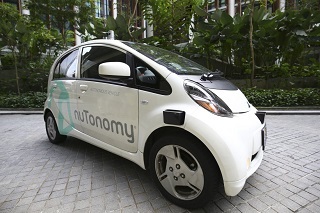Insights on Solar PV and Electric Transportation from 2GreenEnergy Associate Fritz Maffry
Here’s another update from my Kansas City-based friend Fritz Maffry.
The approach to date in KC neglected all recognition that solar and battery prices are headed down considerably, while utility rates have been on an increasing cost ascension for the last two decades. This fundamental economic graph highlights the probable future costs of both options.
The utility has suppressed that from being considered, but the utility-centric model flies in the face of the greater direction of the world, states that are leaders, tech community, you name it. Distributed solar independently owned is an idea whose time has come.
Regarding the market dynamics, it is being recognized that more economic mechanisms are in place to provide advantage to oil vs. renewables. Electric vehicles will soon not need any incentive to compete; they’ve had dramatically increases in sales even during periods of low and decreasing oil prices. Owners are finding they have a great number of advantages.
The approach should have been: get great examples out there, iteratively improve those, then scale when it is proven and clearly economically sound. The utility and planners failed in doing this, and they failed on purpose.
A simple survey of the independent solar firms in the region would validate that the utility purposefully, powerfully works in every way to limit independent distributed renewables and make the the life of independent firms offering solar) difficult.
When there is talk about mandates or being forced to act for the environment, I have been an advocate of intelligent, open, business-oriented use of practical mechanisms to offer options.
It is unfortunate that my presentation on why electric vehicles, solar energy, and autonomous tech are important has not been shared regionally, but there is a profound strategic case behind the benefits that people just have not heard presented well. Certainly the utility or local government never presented it.
Also, it is important to emphasize in considering specific projects to run the numbers to validate assumptions, such as what is energy use on average, are there utility company demand charges, and what is cost of energy. With that information through proven models can process the suitability of solar. Generally with real recognition of value it comes down to higher up-front cost and better long-term outcome. Somehow, people have always been comparing current utility rates against current solar rates, but the model of probable future costs is a better model.
Again, the region has policy that is against the grain of the greater trend, i.e., distributed, independently owned solar. Electric vehicles are advancing so fast that my expectation that I voiced almost ten years ago is as valid, and when we hit gen 3, the industry will need almost no support from government; at gen 4 the contest is mostly over. .
Real estate developers own the premises, the parking lots, the roof tops, the adjacent fields–some of which is dead space. They use the energy themselves as the customer, avoiding cost loads of distribution, overhead of utility, profit of utility, etc.
This is how the greater game will go; right now we are in an artificial phase we have been maneuvered into by the monopoly utility, and all the cash they have spread around in the region. Yet even today, developers can add specific solar to a building, or build a development complex and have their own microgrid. Both work.
Adam Smith and Ronald Reagan would both be satisfied by the directions of what clean energy and electric vehicles can deliver. Smith favored incentives for a new industry that had great potential, and Reagan loved electric cars, i.e., anything that made us less vulnerable to foreign oil. Conservatives have often in history also felt strongly about protecting the environment and health. Somehow all these have gotten twisted in public discourse.
Regional planners are led down the garden path with no open test bed, no renewables program, a utility-centric approach to electric vehicle futures and inept allocation mechanisms for priorities and integrity of process towards public purposes. Does anyone really think the Metropolitan Energy Center reflects smart innovation and funding allocation? It is a case of a sloppy federal program, leading into a sloppy local execution, while the well greased politics of our region toe the line for the utility dominated Chamber. Simply on the wrong side of history.
I would propose anytime funding comes to the region, that most goes now to independent approaches, perhaps 60%. The public should get out of the game of funding a very rich private monopoly, other than essential security in special cases. Utilities are very poor innovators, and they also compromise full efforts working effectively.
It can not be guaranteed that every solar project will have a payback of five years, but it can be proven that solar is a very long-lived investment that works superbly, and has huge advantages over time.
And it only gets better from here, there really is inevitability, which goes far beyond the current political noise. As we have stated before, the democrats and republicans get this wrong in very different ways, but over and over.
When the public understands this, with lots of examples, which will happen in next two years, then the game will be changed forever.

